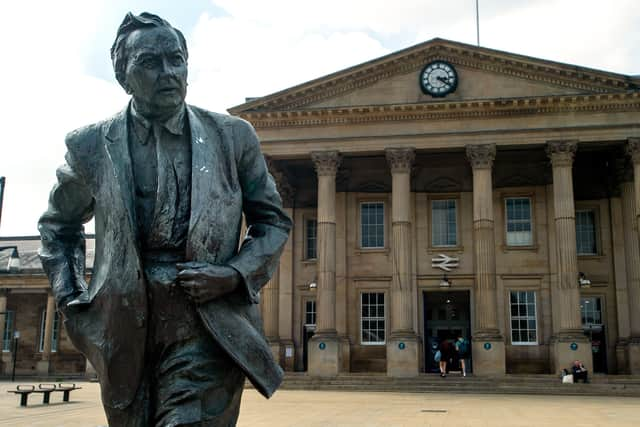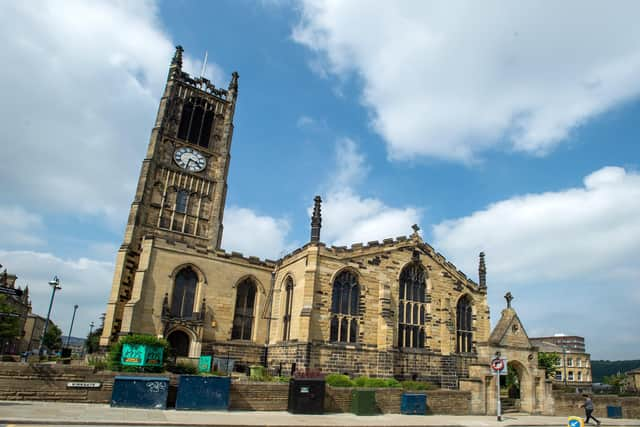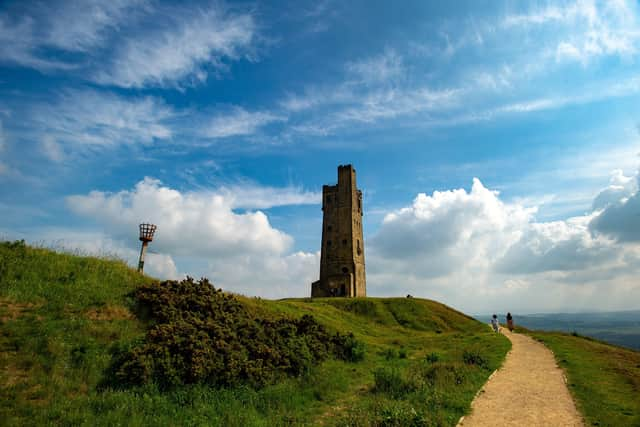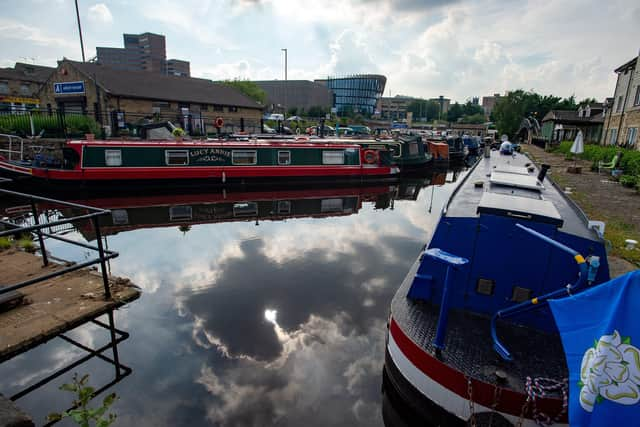How Huddersfield became known as ‘the town that bought itself’
We shall never ever know who Huder was, but way back in the mists of time, he owned a Yorkshire field. In the 1086 Domesday Book, Huder achieved immortality, because his property was noted down as Oderesfelt. A few years later, in another charter, it turned into Hudresfelt and in 1297 it was Huderesfeld. A subtle change, but a significant one.
What the Iron Age settlers called their encampment at the top of Castle Hill is a mystery, but they knew a strategic site when they found it. Then came the Romans, the Anglo-Saxons and the Normans. William I’s cronies, the de Lacy clan, owned the town for a century or so, and then it reverted to the crown. In 1599, with Elizabeth I still on the throne, the Ramsdens rode into town, and they acquired the manor. The Ramsdens dug their heels in and tenaciously held on to what became known as “The Ramsden Estate” (in other words, the bulk of the town) until 1920.
Advertisement
Hide AdAdvertisement
Hide AdIt was then that they sold their land to Huddersfield Council, for the tidy sum of £1.3m. For a while, Huddersfield became known as “the town that bought itself”. Much of the freehold of the town centre, even today, belongs to what is now Kirklees Council. The Ramsdens, it has to be said, were far from absentee landlords and it was Sir John Ramsden, the third baronet, who built the Cloth Hall, and his son (another John) championed the digging of the canal.


In turn, another descendent was hugely influential in getting the rail tracks laid in 1840.
Huddersfield was also at the heart of the Industrial Revolution. For it was here where the latest manufacturing processes started to appear that helped transform industry. It was a genuine Northern powerhouse in its day.
However, such changes also caused explosions of civic unrest, with factories and mills being ransacked. There was also at least one death – a mill owner called William Horsfall, who was murdered in 1812. The situation became so bad that the Army was called in with around 1,000 soldiers to “protect” the town’s 10,000 civilians.
Advertisement
Hide AdAdvertisement
Hide AdHuddersfield can boast of having been home to two Prime Ministers – Herbert Asquith, the last Liberal PM, and Harold Wilson. Herbert was given an earldom for his troubles, while Harold got a barony, Wilson of Rievaulx. Harold, though, also got a statue which stands in St George’s Square.


The sculpture depicts Wilson striding purposefully forward, though he isn’t holding his famous pipe. His widow Mary asked for it to be omitted in case passers-by took it for a caricature. It’s worth noting that Wilson was, in private, more partial to a cigar than he was to smoking his “man of the people” briar.
It was here where the Northern Rugby Football Union formally broke away from the established Rugby Football Union in 1895 and what we know as Rugby League began. They set out their rules at a meeting in the fabled St George’s Hotel.
Author and travel writer Julian (Jules) Brown was “born in the shadow of Castle Hill”, and recalls a thriving music scene in the town. “I haven’t got a clue about who was in charge of booking in the bands that used to appear at the Poly, but they certainly did a grand job,” he says. “We had gigs by people like Talking Heads, Dire Straits and Elvis Costello, and I think I’m right in remembering that the charge on the door was all of £1?”
Advertisement
Hide AdAdvertisement
Hide AdThe King’s Head, the pub on the right-hand side of the station, also became known for its jazz sessions. As Brown points out, the railway station is a Grade I-listed building and the façade that overlooks St George’s Square was once described by Sir John Betjeman as “the most splendid in England”. The station also been described as “a superb stately home with a rail line running through it”.


Brown has his own thoughts. “It would grace any city, anywhere in the world – look at it on a day when the sun is shining, across the landscaped square, and you could be in Milan or Rome, it’s that elegant and classical.”
The station was designed by James Pigott Pritchett. He worked closely with the station builders, Joseph Kaye and Sons, and delivered a magnificent portico in the Corinthian style. Work started in 1846 and was completed four years later.
Today, there are two pubs on the right and on the left of that portico – the King’s Head (formerly the Station) and the Head of Steam, and both are much admired by those who enjoy their real ales.
Advertisement
Hide AdAdvertisement
Hide AdPritchett had a track record in the town, for he was also responsible for the earlier rebuilding of St Peter’s Church. By the 1830s, the 16th century parish church was in need of urgent repairs and because the population of the town was growing fast as the industrial revolution gathered pace, it was decided to build something new. Pritchett’s design was Gothic in concept, and it was completed in 1836. One of its impressive features is the exceptionally fine stained glass, created by Thomas Willement.


Three years ago, St Peter’s was the setting for the funeral of one of the town’s most popular sons, the ’Allo ’Allo! star Gorden Kaye. He appeared in all 84 episodes of the sitcom, took the show into the West End, and was involved in a subsequent revival in Australia. The many mourners at his funeral gave him a grand send-off, joining in with a spirited rendering of On Ilkla Moor Baht ‘At.
There’s certainly an impressive roll-call of actors who come from Huddersfield, including Jodie Whittaker, Joanna Christie and James Mason. Sir Patrick Stewart was chancellor of the town’s University for 11 years until 2015 and, although born in Mirfield, is a self-proclaimed “lifelong supporter” of Huddersfield Town, while Roy Castle, the multi-talented entertainer, dancer and TV presenter, was born in nearby Scholes.
Then there’s the celebrated singers of the Huddersfield Choral Society, formed in the last year of the reign of William IV, and still going strong. If you want to sing with this glorious group (still proudly amateur, and with over a dozen best-selling recordings under their belts), then you’ll have to pass an audition – but it is open to all.
Advertisement
Hide AdAdvertisement
Hide AdAs with any town, it’s not without its eyesores, but it remains flush with grand buildings as well as two suitably impressive parks, Beaumont and Greenhead, nearby. And, overlooking it all, up there on Castle Hill, is the Victoria Tower, 106 feet high. Added to the hill, it makes the parapet 1,000 feet above sea level.
Oddly, it appears on the label of a New Zealand wine called (what else?) Castle Hill. If you find that Huddersfield’s wine bars and restaurants stock it (when they reopen), then go for it. Like the town itself, it really is most agreeable.
Editor’s note: first and foremost - and rarely have I written down these words with more sincerity - I hope this finds you well.
Almost certainly you are here because you value the quality and the integrity of the journalism produced by The Yorkshire Post’s journalists - almost all of which live alongside you in Yorkshire, spending the wages they earn with Yorkshire businesses - who last year took this title to the industry watchdog’s Most Trusted Newspaper in Britain accolade.
Advertisement
Hide AdAdvertisement
Hide AdAnd that is why I must make an urgent request of you: as advertising revenue declines, your support becomes evermore crucial to the maintenance of the journalistic standards expected of The Yorkshire Post. If you can, safely, please buy a paper or take up a subscription. We want to continue to make you proud of Yorkshire’s National Newspaper but we are going to need your help.
Postal subscription copies can be ordered by calling 0330 4030066 or by emailing [email protected]. Vouchers, to be exchanged at retail sales outlets - our newsagents need you, too - can be subscribed to by contacting subscriptions on 0330 1235950 or by visiting www.localsubsplus.co.uk where you should select The Yorkshire Post from the list of titles available.
If you want to help right now, download our tablet app from the App / Play Stores. Every contribution you make helps to provide this county with the best regional journalism in the country.
Sincerely. Thank you.
James Mitchinson
Editor
Comment Guidelines
National World encourages reader discussion on our stories. User feedback, insights and back-and-forth exchanges add a rich layer of context to reporting. Please review our Community Guidelines before commenting.